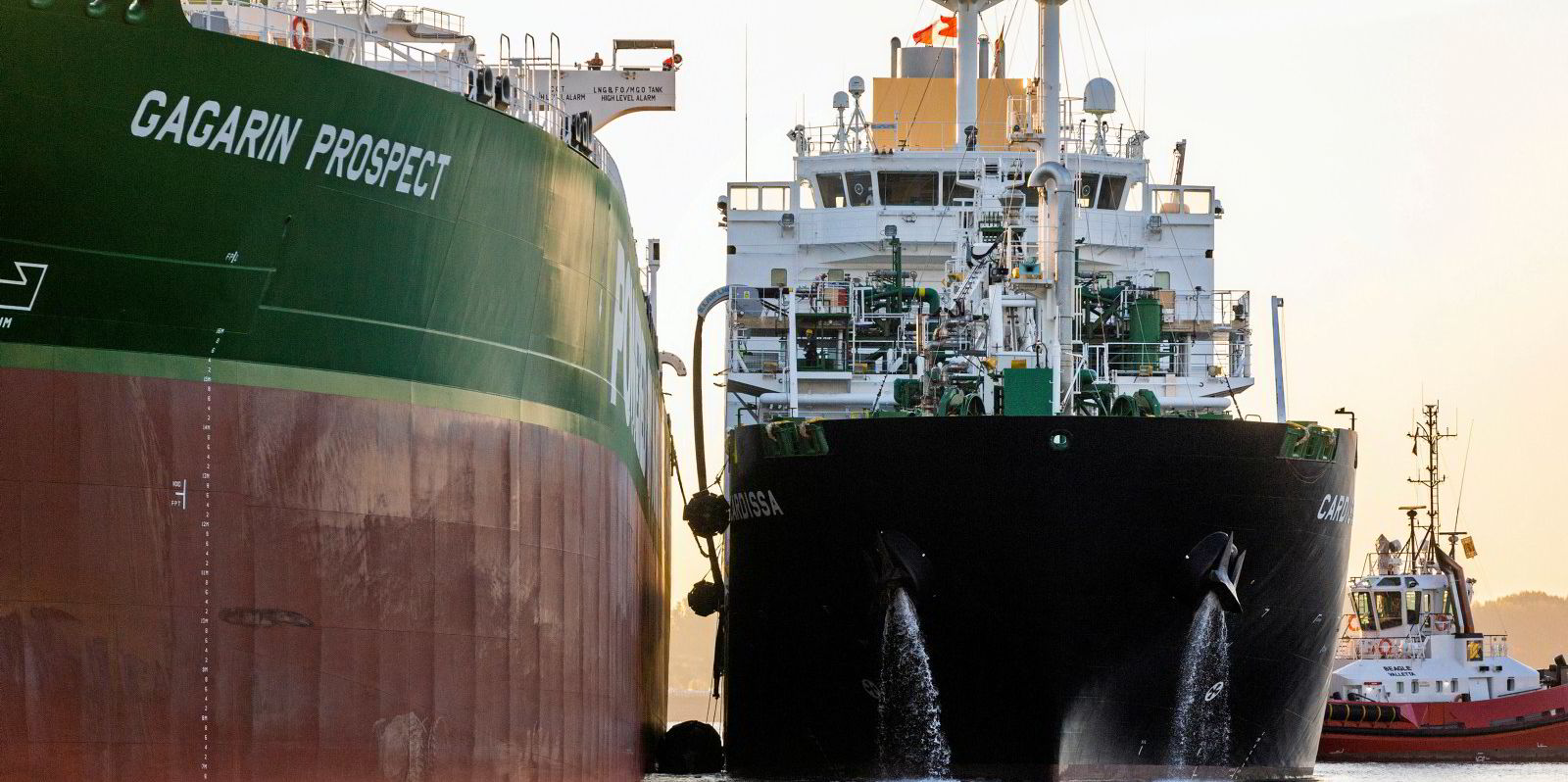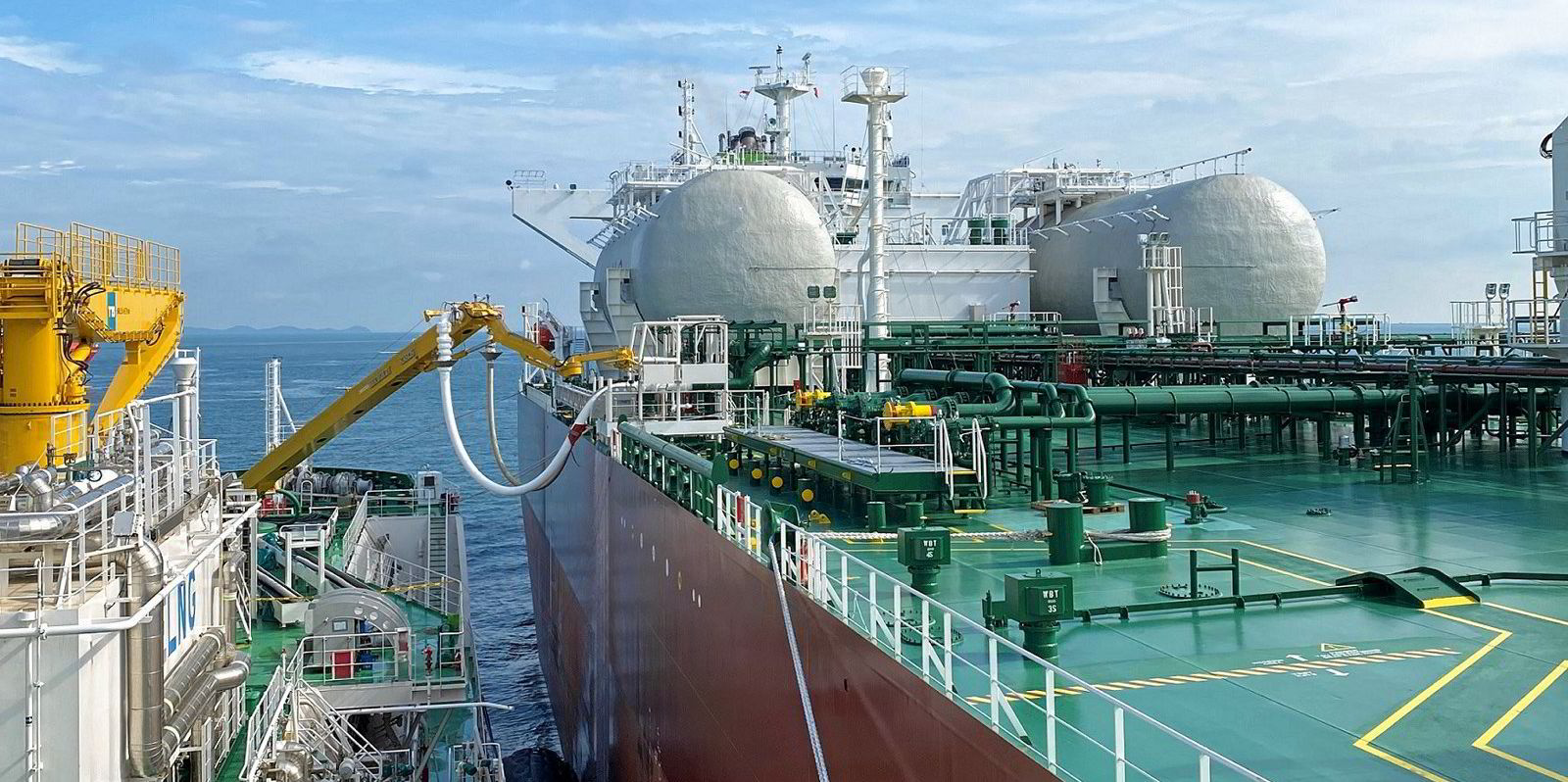Energy major Shell is concentrating its supply of marine fuels on LNG, methanol, fuel oils and biofuels but will not be moving forward with ammonia at present.
In a conversation with TradeWinds, Shell Marine president Melissa Williams said there are many questions surrounding ammonia.
“There continue to be safety concerns there regarding toxicity mitigation,” Williams said. “Until we can address the safety concerns regarding toxicity, we will not supply something that is not safe. Shell has decided not to invest in the supply of ammonia for shipping until these are addressed.”
Williams pointed out that there is, as yet, no ammonia dual-fuel engines available or newbuilding orders that might give the company the demand signals that it would need to tackle the supply of ammonia as bunker fuel.
“What we see are dual-fuel LNG, dual-fuel methanol and continually building single fuel oil only vessels,” she said. “Based on those demand signals, that’s where our focus is.”
Shell has been a pioneer in the use of LNG as a marine fuel but its move into methanol is relatively new.
Williams said the company sees methanol dual-fuelled assets being built, so it is currently investigating what it would take to supply bio or green methanol that is affordable to the market.
She stressed that fossil or grey methanol’s carbon intensity is higher than that of fuel oil, so Shell would only want to supply a green version of the fuel.
Williams acknowledged the positives of the bio and synthetic versions of the fuel in its ease of storage, available engine technology, significant well-to-wake greenhouse gas reduction potential and that existing infrastructure can be used.
But Shell also sees challenges to be overcome for green methanol to be a viable shipping fuel in that it has a flash point of just 11C, an energy density of roughly half that of heavy fuel oil, low availability, competition from other sectors and is costly to produce.
Shell is also scaling up its supply of biofuels.
The major already supplies biofuels in Rotterdam — including FAME [fatty acid methyl esters], and biodiesel derived from renewable sources — and is looking to expand this out to Singapore. The company is also starting to trail bio-LNG as a drop-in fuel with its customers.
Williams was speaking following the publication of the Shell-commissioned Decarbonising Shipping: All Hands on Deck 2.0 on 1 June, which is based on in-depth conversations by Deloitte with 25 shipping executives.
She described this latest report, which follows a first version in 2020, as “a health check” but one that comes with the conclusion that while there has been progress in the industry on decarbonisation it is not fast enough.
“What it shows is there is some progress but it’s not fast enough,” Williams said.

Of the positives, she said more owners are now building dual-fuel vessels.
Shell is seeing an increasing demand for LNG as a fuel.
Williams said the company is also getting more requests for biofuels albeit not consistently. But when customers show an interest, it is working with them on it.
‘Fuel mosaic’
For fuel oil, this tends to be the physical product as a drop-in solution. On bio-LNG, Shell supports a mass balance approach — mixing bio-supplies into the grid and issuing certificates for the volumes purchased by owners. This allows the company to scale up more quickly as it gets customers comfortable with this solution and to supply the physical product here would have a higher footprint.
But Williams believes much more could be done with energy-efficient technologies — naming Shell-developed solutions such as JAWS but also others like air lubrication systems — which in combination data has already shown would help reduce carbon emissions.
“Energy-efficient technologies are not fully utilised and it is the lower cost option to start decarbonisation,” she said, highlighting that these can be used on any engine type. “I don’t see as much uptake as we would expect.”
Williams likes to refer to the emerging “fuel mosaic” in shipping.
“If we realise there’s no one silver bullet [to replace fuel oil], we have to be open to other products that could potentially meet our requirements,” she said.
Williams urges collaboration and partnerships for the industry to progress on decarbonisation.
“This is new territory,” she said, stressing that dual-fuel technology only exists in shipping.
An owner may have a dual-fuel vessel but only be buying fuel oil.
“What sort of demand signal is that sending? Williams asked rhetorically, explaining that this is why conversations need to “get a bit deeper”.
Similarly, she said if a shipowner builds a dual-fuel methanol vessel but only burns fossil methanol, then its emissions will be worse than fuel oil. If the intention is to reduce the carbon footprint, then there may be a need to look at other options in managing that asset.
“Customer what do you want?” Williams said. “We can’t decarbonise by ourselves.
“As a supplier, we are trying to find the most affordable pragmatic solution to reach those lower carbon options but, if our customers are not buying it or interested, it is a waste of effort.
“We need more transparency than we have in the past in explaining the why. Once we understand the why, we can develop our fit-for-purpose solution together.”






